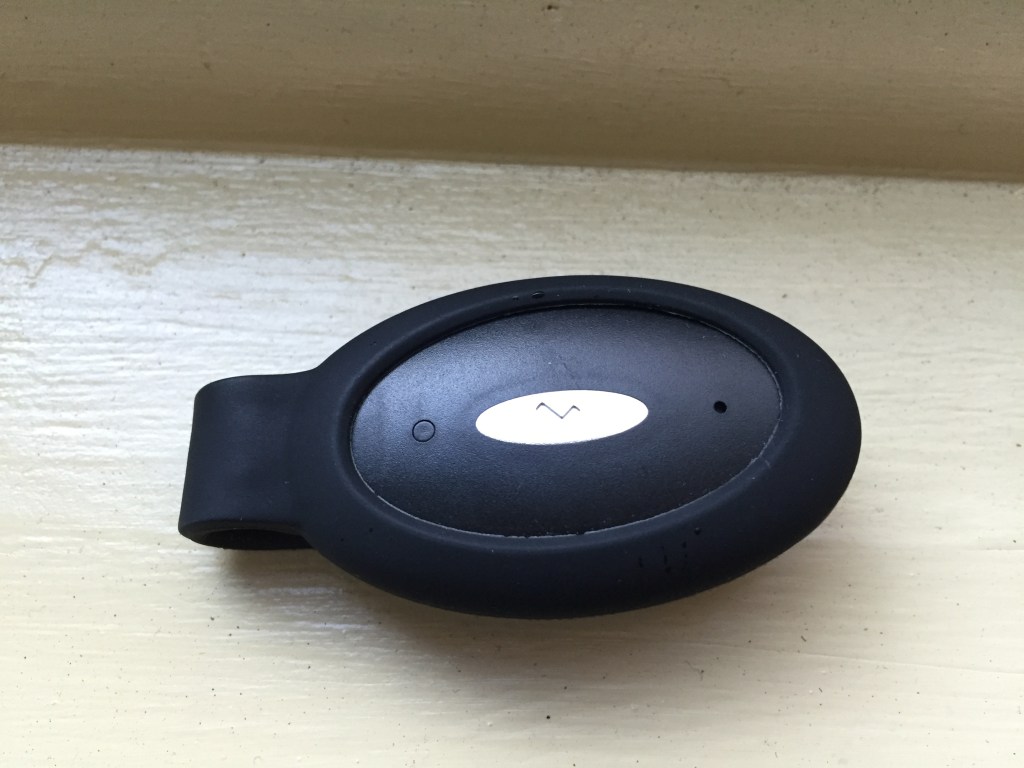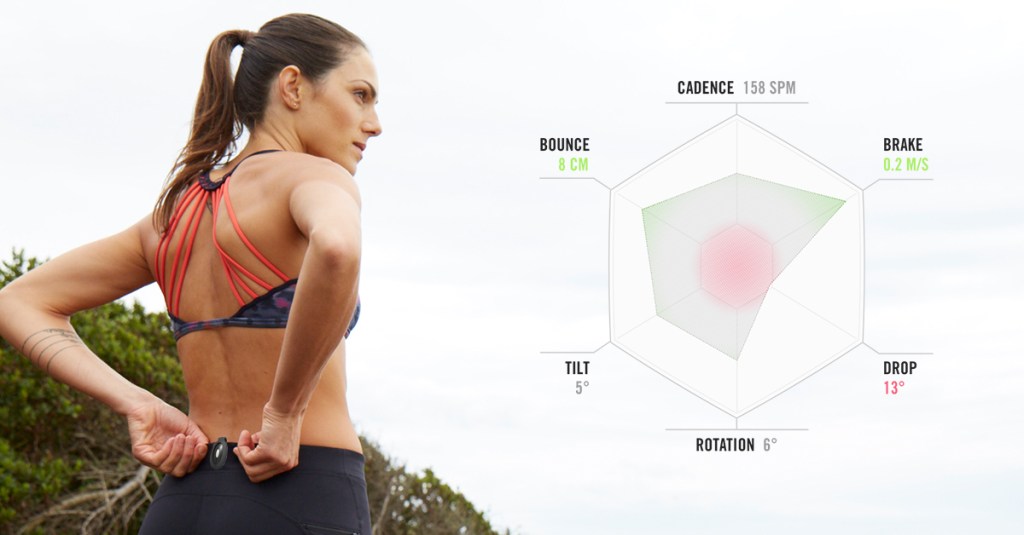TechCrunch first caught wind of Lumo’s smart pants with the running sensor last October. It was a breakout product from its posture trainer Lumo Lift and a first step into both connected garments and the running industry. You can check out our video review with Lumo co-founder Monisha Perkash here.
Lumo’s pants needed the sensor to go in a special pocket to work when we last caught up with the company, but now Lumo has separated the sensor from the pants so you can take a run with the tech in any pants you want.
HOW IT WORKS:
Lumo Run’s sensor works by placing it in a special clip provided and then snapping the clip onto the back of your running pants. Make sure the sensor is powered up first before beginning. You’ll know it’s ready when a little light at the bottom of the sensor flashes green.
Lumo recommends placing the part of the sensor with the USB plug toward the bottom of the clip for more accurate results.The clip is pretty tight when you first get it so it may take some maneuvering to get the sensor inside. Placing the USB connector at the bottom also makes it more convenient to slip off the clip and plug in again.
You’ll then download the Lumo Run app and set up a profile. The app on your phone will locate your sensor if everything is set up properly, and Lumo will begin to guide you on a 10-minute test run to find out all your weaknesses.
The app told me in a delightful Australian woman’s accent that I was moving my hips too much from side to side while running and I needed to work on cadence. Perkash, an avid runner herself, told me cadence, or your running stride, is one of the most common things runners need to work on to prevent injury and improve their form. It can also help you run faster.
A little bell will ding on the app if you are within your cadence goals. Mine was for 170 strides per minute, but elite runners usually get around 180-200 strides per minute. The app knows what you need to hit based on your height, weight, gender and your current fitness level.
HOW IT COMPARES:
Lumo Run tracks distance, pace, and running goals in a similar manner to many other fitness devices and apps. However, the main focus is all on improving the way in which you run.
Your form is important for preventing injury, as most any running expert will tell you. Poor form leads to all sorts of problems with your back and knees and could mean the difference in race time, distance and how much you’ll enjoy the activity down the road.
Perkash told me she actually had bad knees before using Lumo Run but claims the problem went away after using the device.
The device also deviates from other fitness trackers like the Apple Watch, Jawbone or Fitbit in that it does not track such as the calories you burned during activity, your sleep cycle, or overall steps throughout the day – basically Lumo Run snips out any data not pertaining to posture.

If calories burned is important to you like it is to me, you could do what I did on my run and combine Lumo Run with the Moves app or RunKeeper to get your overall mileage with the calories and how much of that was spent running versus walking.
However, posture is something very few running apps and devices take into account and not something more popular devices like the aforementioned Jawbone and Fitbit even consider.
Glance, a running watch by At a Glance, is one of the few other fitness wearables out there aiming to improve your running form while tracking your distance, calories burned, steps and sleep quality. I have not personally reviewed a Glance so I don’t know how the experience compares, but you can purchase one on Amazon for
I have not personally reviewed a Glance so I don’t know how the experience compares, but you can purchase one on Amazon for $129.99. The Lumo Run sensor goes for $99.99 online and the men’s shorts and women’s capris with the sensor clip will round you up to $200.
Lumo’s running app will also guide you through improvements as you run and provides coaching videos to show you how to improve your run over time. You can set goals and let the app
Some of the other features included with Lumo Run:
- lab-grade biomechanic measurements – get feedback on your running bounce, cadence, braking, pelvic rotation, and drop.
- Feedback using an artificially intelligent coach to help you continue to improve over time
- Post-run summaries
- Up to 20 hours on a single charge (during running time)
- Run phone free – go out on a run with the sensor and leave your phone at home, then come back to wirelessly sync the data and get updates about your running form.
- Waterproof and machine washable
ROOM FOR IMPROVEMENT
Lumo Run offers something an app cannot, but it’s not without competition – and the main competitor, Glance, incorporates a lot of other features like calories burned, steps, and sleep quality data for not a whole lot more money. But that’s not to say Lumo couldn’t add those features in.
WHEN AND WHY I WOULD BUY
Overall I thought Lumo Run’s sensor was pretty handy and has the potential to prevent serious injury. It’s also cheaper than hiring a running coach to watch your every stride like elite athletes do. Like almost every wearable on the market, I’m not sure I’d use it over time but it’s not a bad price for the data.
As a not-very-hardcore runner, I would be willing to buy it with a few more additions. However, the sensor would be a definite and immediate buy for me, if I were about to run a marathon. The injury prevention promise and improvement in overall time would be enough for me to make a $100 investment and given my overall experience with the product, I would recommend it.

ConversionConversion EmoticonEmoticon